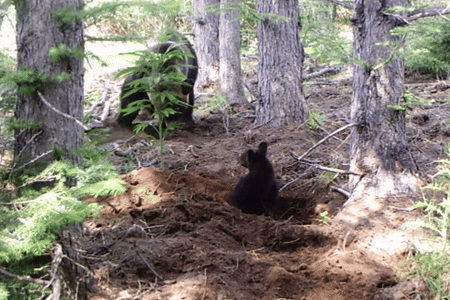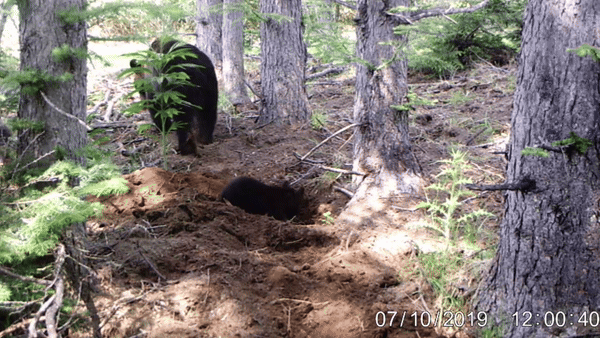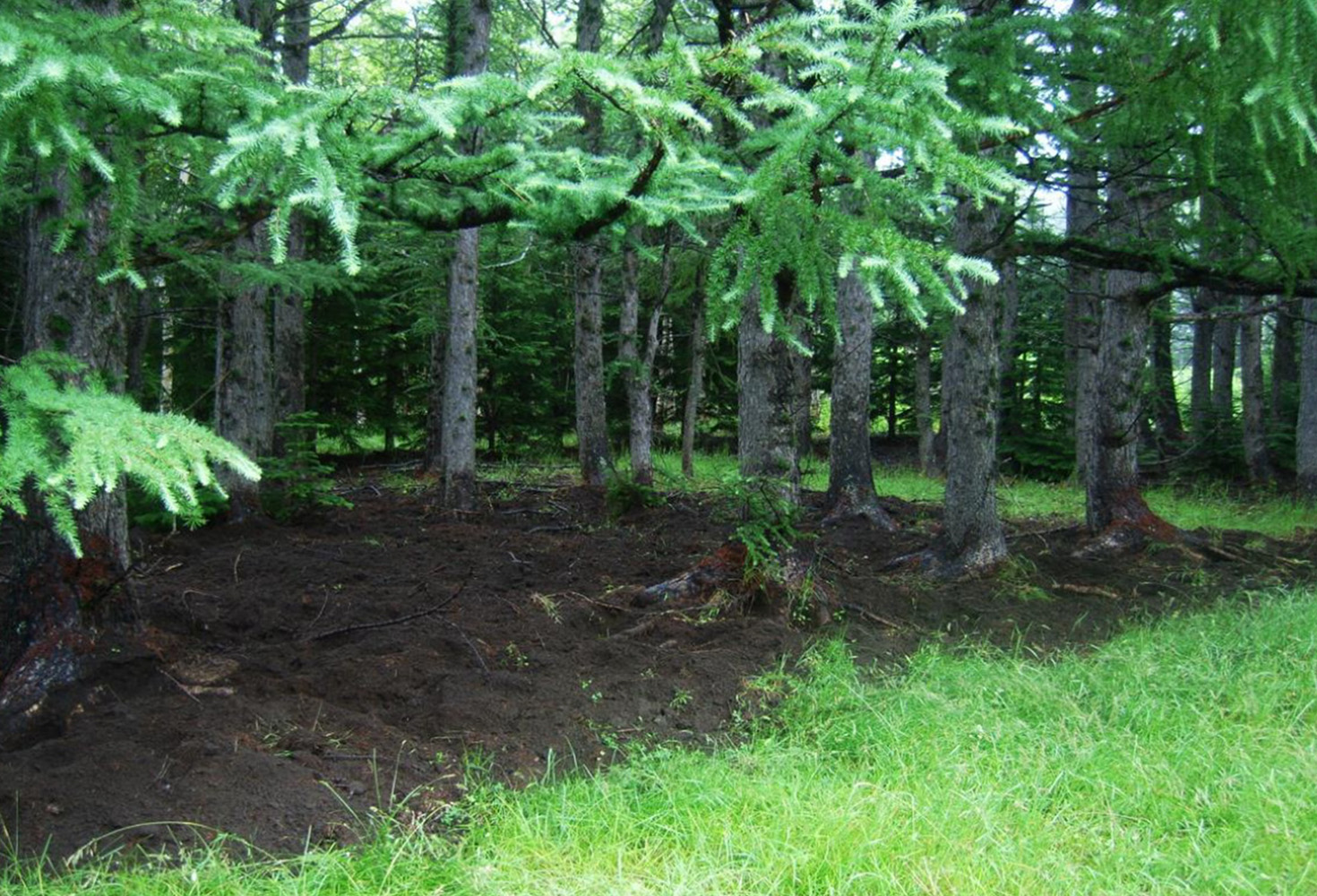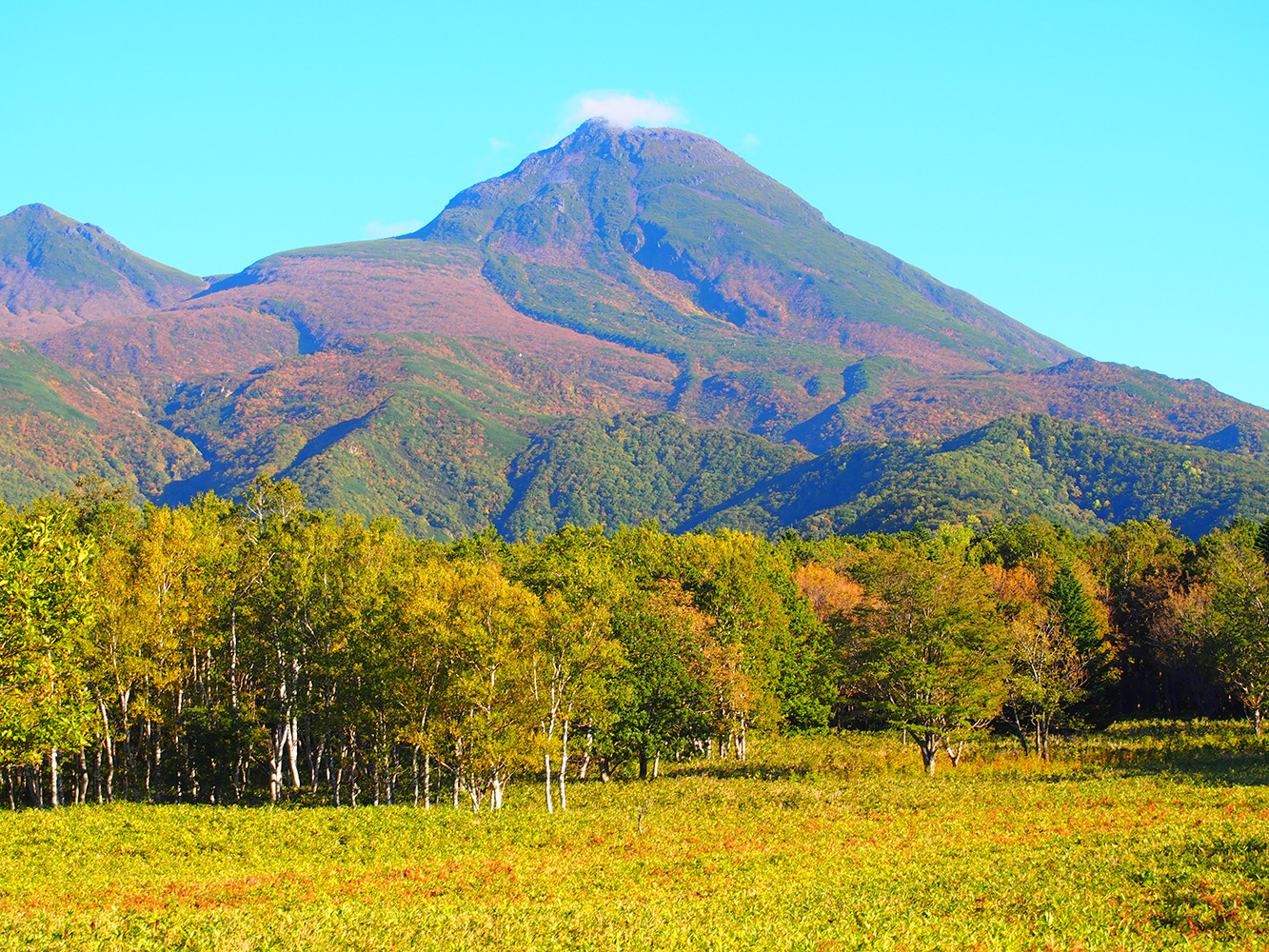Brown bears digging up artificial forests Study at Shiretoko World Heritage site shows unexpected interaction between animals and human-planted trees Research news


If you go down to the woods today. Brown bears in Shiretoko grow to between 1.3 meters and 2.3 meters tall and can weigh up to 400 kilograms. Their size and bulk mean that they need a plentiful supply of food, especially before hibernation. Cicada nymphs are not typically part of a bear’s diet, but have proved popular with local brown bears like this mother bear and her cub. © 2024 Tomita and Hiura
Brown bears foraging for food in the Shiretoko Peninsula of Hokkaido, Japan, have been disrupting tree growth in artificial conifer forests, according to a new study. Researchers compared soil and tree samples from human-forested plots with samples from natural forests. They found that the bears’ digging for cicada nymphs damaged tree roots and altered the nitrogen content of the soil, which in turn limited the diameter growth of trees. The phenomena of bears digging for cicadas, an unusual food source, appears to be restricted to human-planted conifer forest; diversely vegetated natural forest was unaffected. Bears in Hokkaido sometimes suffer from sparse food supplies, but it is not known if this is the reason for their cicada search. These results are important for animal conservation and efforts to return used land to a wild state, highlighting the value of recreating diverse local ecosystems which can support natural wildlife behavior.
On the northeastern tip of Hokkaido, Japan’s northernmost main island, sits the Shiretoko Peninsula, and within it the Shiretoko National Park. Designated a World Nature Heritage site, thanks to its thriving ecosystem and diverse wildlife, the peninsula is home to Japan’s largest land animal, the brown bear. It is estimated that almost 500 bears live within the 70-kilometer-long and 25-km-wide strip, making it one of the highest densities of brown-bear populations in the world. Bear numbers in Hokkaido have been gradually recovering since the 1990s, when conservation efforts began in earnest after decades of unchecked culling.
Rather than being an isolated wilderness, thousands of people live and work in the Shiretoko Peninsula, and it is also a popular tourist destination. Since the 1970s, residents and local government have been planting conifers, such as larch and spruce, on abandoned farmland as a way to help return the area to its original forested state. However, this effort has led to some unusual behavior from the other larger inhabitants. Assistant Professor Kanji Tomita from Kochi University and Professor Tsutom Hiura from the University of Tokyo have been studying how brown bears interact with these human-made forests and found that the bears behave differently than when in their natural woodland.

Bear-dug human-made conifer forest. The Japanese larch is a conifer tree native to central Japan and often used in forestry in the northern part of Japan, especially in Hokkaido. It is popular for construction, making pulp and for Japanese bonsai. The human-made forests in Shiretoko lack an underlying layer of other diverse plant life, notably dwarf bamboo, which seemed to deter the bears. © 2024 Tomita and Hiura
“In our latest study, we found that brown bears have been negatively impacting the growth of replanted larch conifer trees. They come to the new forests to dig for cicada nymphs, a behavior we haven’t seen in natural woodland or heard reported elsewhere in the world,” said Hiura from the Graduate School of Agricultural and Life Sciences. “While mammalian digging behavior in natural ecosystems has typically been seen as having a positive influence, our research shows that the outcome is different in anthropogenic (human-made) landscapes.”
This latest research is a follow-up to a previous study by Tomita and Hiura, in which they first discovered the bears’ penchant for cicada nymphs. The pair were surprised that the bears dug for the cicadas exclusively in human-made conifer forest, not in natural woodland, and noticed the damage being done to the roots of the trees in the process. So, they decided to assess the impact of the bears’ behavior on the artificial forest’s ecosystem.
The researchers compared soil samples, tree needles and tree core samples from dug and undug larch conifer forests in Shiretoko. Finding undug plantations was a challenge, so they had to collect samples from conifer forests which had an underlying layer of bamboo, which the bears avoided. They found that digging activity decreased the biomass of fine roots, soil water content and nitrogen availability. This resulted in the width, or radial growth, of the trees being less in dug forests than in the untouched forests.

Shiretoko World Nature Heritage site. The name Shiretoko comes from an Ainu phrase meaning “End of the Earth.” The indigenous Ainu people of northern Japan have long had a close relationship with bears, which in local religion were seen as being a mountain deity in disguise and considered sacred. ©2024 Kanji Tomita
“Previous studies have not considered the human impacts of forestation efforts because data were collected from natural ecosystems. So, this study is important for wildlife conservation and understanding the roles of large mammals in anthropogenic landscapes,” explained Tomita. “Referring to knowledge from only pristine ecosystems is not sufficient. To develop more appropriate management strategies for large carnivores, we need to further understand their ecosystem roles in human-made landscapes.”
“Rather than rely on artificial afforestation (converting land into forest) methods, this research highlights the necessity of introducing natural regeneration methods by seed dispersal from the surrounding area,” said Hiura. “This will not only restore ecosystems with high species diversity and rich interactions among animals and plants, but it will also be beneficial to human society in the long term.”
Bears in Shiretoko and other parts of Japan have recently struggled to find enough of their staple foods, such as salmon and nuts, to survive. Increased human development and portioning off of land, along with variable harvests due to climate change, have exacerbated their situation. This increases the risk of potentially dangerous encounters, for both people and bears, as they wander into more populated towns, campsites and fishing areas. Enriching the bears’ natural habitat and planning new forests based on ecological research will hopefully help bears and humans to coexist safely and thrive in this beautiful environment.
Papers
Kanji M. Tomita and Tsutom Hiura, "Brown bear digging decreases tree growth: Implication for ecological role of top predators in anthropogenic landscapes," Ecology: March 1, 2024, doi:10.1002/ecy.4266.
Link (Publication )
)






